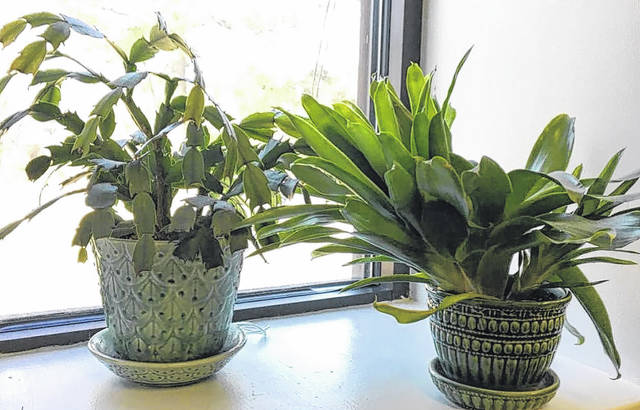Unless you enjoy keeping up with the latest trends on social media, you may have missed the growth of a recent fad: houseplants.
Keeping houseplants has gained in popularity in recent years, spurred on by millennials, market research says. Their penchant for documenting their every move on social media is only stoking the interest. Even before the pandemic began, houseplant purchases were increasing substantially, with millennial buying fueling about a third of the increase, according to The Economist. With the onset of COVID-19, the interest in houseplants has soared even higher. On line stores offer a wide selection, including rare plants, such as a four inch, pink philodendron that sells for $125. Interest is so high, wholesale growers can’t meet demand.
So, what is it about houseplants that makes them an essential item for our time? Research has shown that having houseplants in your living space is comforting, bringing the benefits of nature inside. Several studies have shown multiple benefits from being around houseplants, including improved attention, more rapid healing from illness or surgery (hence the tradition of providing plants and flowers to patients in the hospital), increased productivity, and improved job satisfaction. With benefits like these, the question is, can you afford not to have a houseplant during this pandemic?
Whether you’re new to keeping houseplants or if you’re the caretaker of a generations old Christmas cactus, here are a few tips to keeping them happy and healthy. The basic rule, similar to the adage for the outside garden, right plant, right place: choose an indoor plant with needs that match your indoor space, particularly available light. South facing windows offer the brightest light. If you have these, you’ll have the ability to have light loving plants such as cactus, succulents, or Sago palm. If you don’t have high light windows, consider plants such as peace lilies or philodendron. Do you like to potter around with your indoor plants? Consider slightly fussy plants like ferns or African violets that require more attention. If you travel frequently, or want an attractive, sculptural plant that doesn’t require much care, a cast iron plant or snake plant is for you.
Another major caution: do not overwater. It’s one of the primary reasons houseplants die, as well as the cause of a common pest, fungus gnats. The soil in the top one inch should get fairly dry between waterings. Do not allow your plant to sit in water (many cache pots don’t have drain holes). One the other hand, many tropical plants, such as orchids, benefit from sitting in a tray with gravel and water. The gravel keeps the plant from sitting in the water, yet as the water evaporates it gives the tropical plant the humidity it needs to flourish.
Fertilize, but not too much. This requires some observation and care to learn the needs of your plant. Over time, fertilizer salts can build up in your pot: look for a white “scum” on the soil surface or the sides of your pot (especially terra cotta). Fertilizer salts are toxic and can burn plant roots. Flush the pot and soil with a gallon or so of clear water and allow it to flow freely from the pot (this operation should take place outside or in a sink or bathtub).
Watch for pests: mealy bugs, spider mites, scale, and fungus gnats are common problems. Insecticidal soap and horticultural oils are low toxicity ways to control pests on house plants. Thoroughly spray down the leaves and stems, then repeat within seven to 10 days to catch any developing insects you missed the first time. Ficus and citrus trees frequently have scale. Scale looks like the name suggests, the insect lives underneath the scale armor and sucks juices from the plant. Horticultural oil is the best treatment, as well as wiping down the stems with warm soapy water to wash them off.
Keep in mind that philodendron, Sago palm, and many other common houseplants are somewhat toxic and, if ingested in quantity, can cause illness. If small children or animals are part of your household, be aware of the potential toxicity of your houseplants and plan accordingly.
The main thing: enjoy your houseplants, recognizing they are living things and require a little TLC to keep them happy and healthy. The good news is they don’t need nearly the time and money as that other pandemic trend, adopting a puppy.
For more information on taking care of both indoor and outdoor plants, contact NC Cooperative Extension, Richmond County. Give us a call at 910-997-8255, visit our website, and follow us on Facebook.

